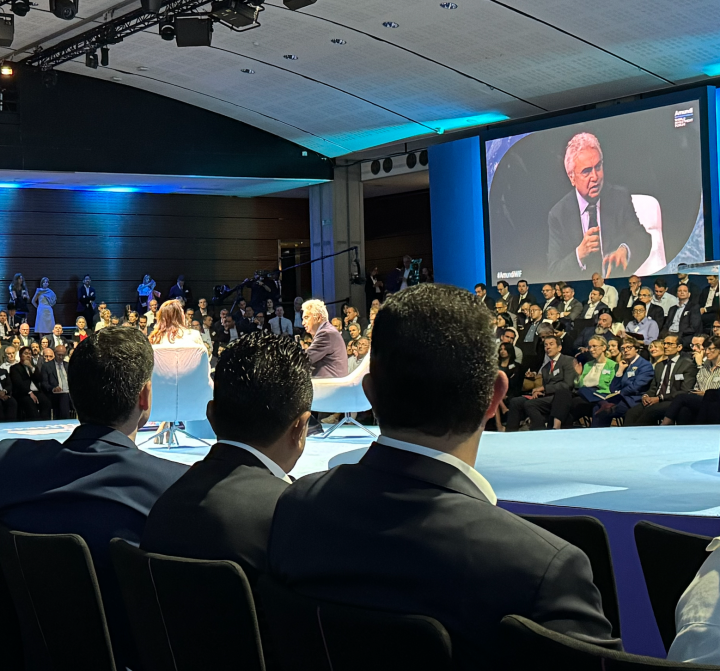
Strong inflows at Amundi, Natixis, DWS and Allianz show investors’ appetite for income strategies. But equity outflows, particularly in active funds, and margin pressure reveal an industry split between volume growth and conviction.
Amundi ended June at an all-time high of roughly 2,270 billion euro in assets under management, helped by first-half net inflows of 52 billion euro. Yet management also flagged that “risk aversion continues to affect net inflows from Partner networks,” a proxy for European retail demand. Equity was the drag in active strategies: net outflows of about 4.8 billion euro in the first half, while bonds and ETFs did the heavy lifting.
“With net inflows of 52 billion euro, Amundi’s performance in the first half of the year was equivalent to the whole of 2024,” chief executive Valérie Baudson told analysts on 29 July, adding that clients are leaning on the group’s “depth” and “diversification” to navigate markets.
Rotation towards fixed income
That rotation is also clear at Groupe BPCE’s Natixis Investment Managers. Net new money reached 22 billion euro in the first half, including 16 billion euro in the second quarter, with inflows concentrated in fixed income affiliates such as Loomis Sayles, Ostrum AM and DNCA. The mix shift came with a price: the fee rate fell as fixed income’s share rose.
Swiss banking giant UBS tells a similar tale. In the second quarter its asset management division saw net outflows of two billion dollars once associates are included, and five billion dollars if money-market funds are excluded. Its asset management unit nevertheless posted a marginal increase in revenue on the back of higher net management fees and performance fees.
“So clients are still on a kind of wait-and-see attitude, not only institutional and private clients, but also corporate clients,” UBS chief executive Sergio Ermotti told CNBC on 30 July. “You see the deployment of cash, but the conviction level is not yet to the extent that it will make it more constructive.”
DWS sees continued inflows in Q3
Fee mix and pricing are doing as much work as flows. At Natixis, management pointed to a lower fee rate due to the larger share of fixed income in the product mix.
The experience is different at Deutsche Bank’s DWS, where strong cost control is limiting the impact on fees. The German asset manager reported that second-quarter management fees grew mainly in passive products like its Xtracker ETFs. Net flows improved from last year’s outflows, but the revenue mix is tilting away from traditional active equity. DWS reported 15.4 billion euro in long-term net inflows for the first half.
“Flow momentum has already picked up again in early Q3,” DWS said on 24 July.
Where the growth is
Allianz’s asset management arm, home to Pimco and Allianz Global Investors, saw third-party assets benefit from positive markets and net inflows, with higher average assets lifting management-fee revenues. As with peers, the big gains came from market appreciation and scale, not an equity revival.
Third-party net inflows amounted to 42 billion euro in the first half, down 12.5 percent from a strong period a year earlier, Allianz reported on 7 August. These inflows partly offset a 160 billion euro negative impact from foreign currency translation, mainly due to a weaker dollar, leaving assets under management at 1,842 billion euro per 30 June, down from 1,920 billion euro a year earlier.
Allianz and UBS did not break down their inflows by asset class, nor did BNP Paribas.
BNP Paribas reports asset management within its investment and protection services division, which also includes insurance. Revenue growth here was modest and overshadowed by corporate and investment banking, a reminder that asset management remains steady but not the star of the show.
Within that IPS division, a 6 percent increase in Q2 wealth management revenue was reported on an increase in fees, while asset management decreased 1.8 percent due to a “lacklustre” real estate market. Thanks to an 8.2 percent hike in insurance revenue, division revenue rose to 1,531 billion euro. That is just 12.1 percent of Q2 total group revenue.
Taken together, these results show an industry split between managers capturing institutional and cross-border demand for income and those struggling with equity outflows. Double-digit billion first-half net inflows at Amundi, Natixis, DWS and Allianz, alongside explicit comments on a bigger fixed-income share pressing the fee rate, capture both the scale and the trade-off.